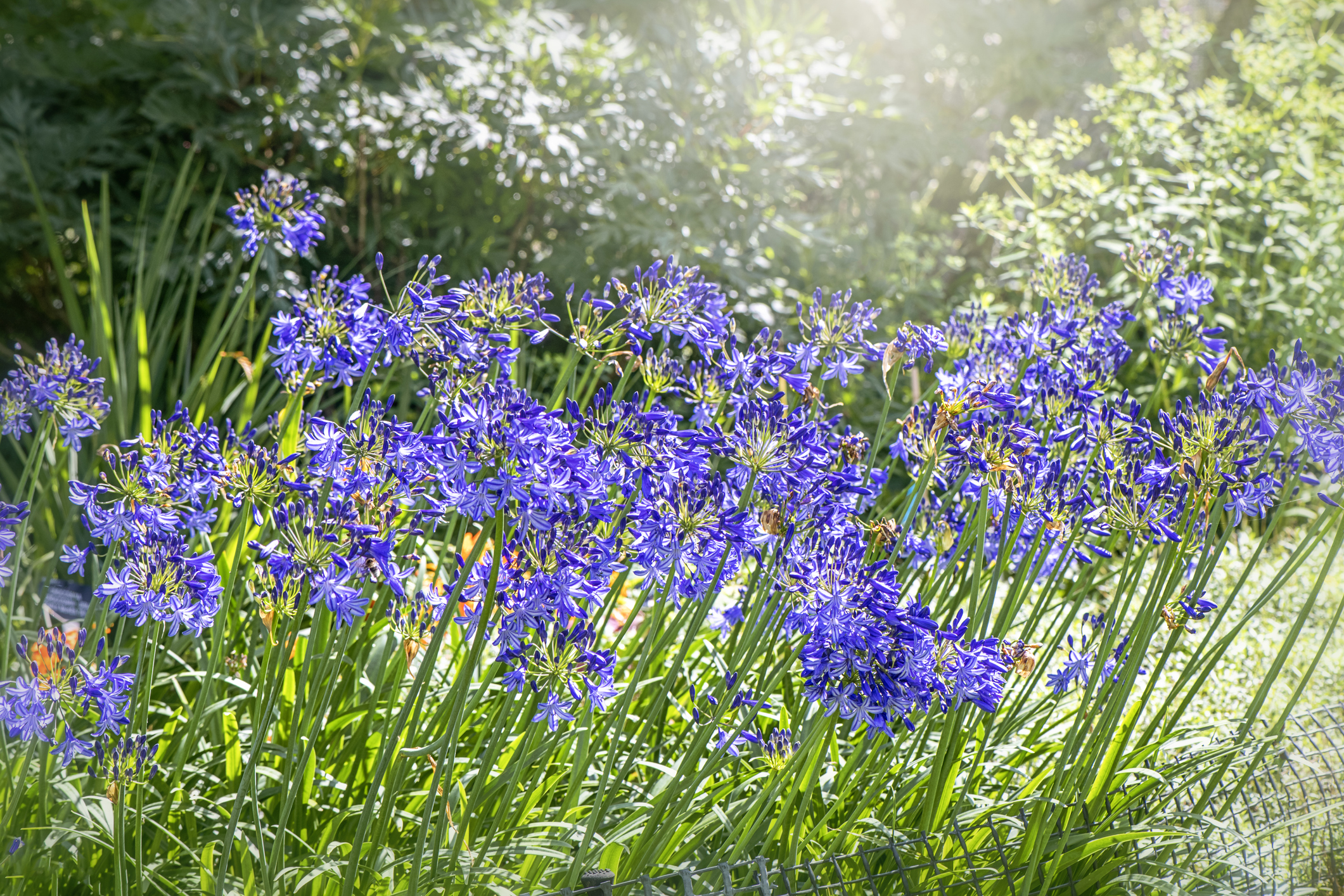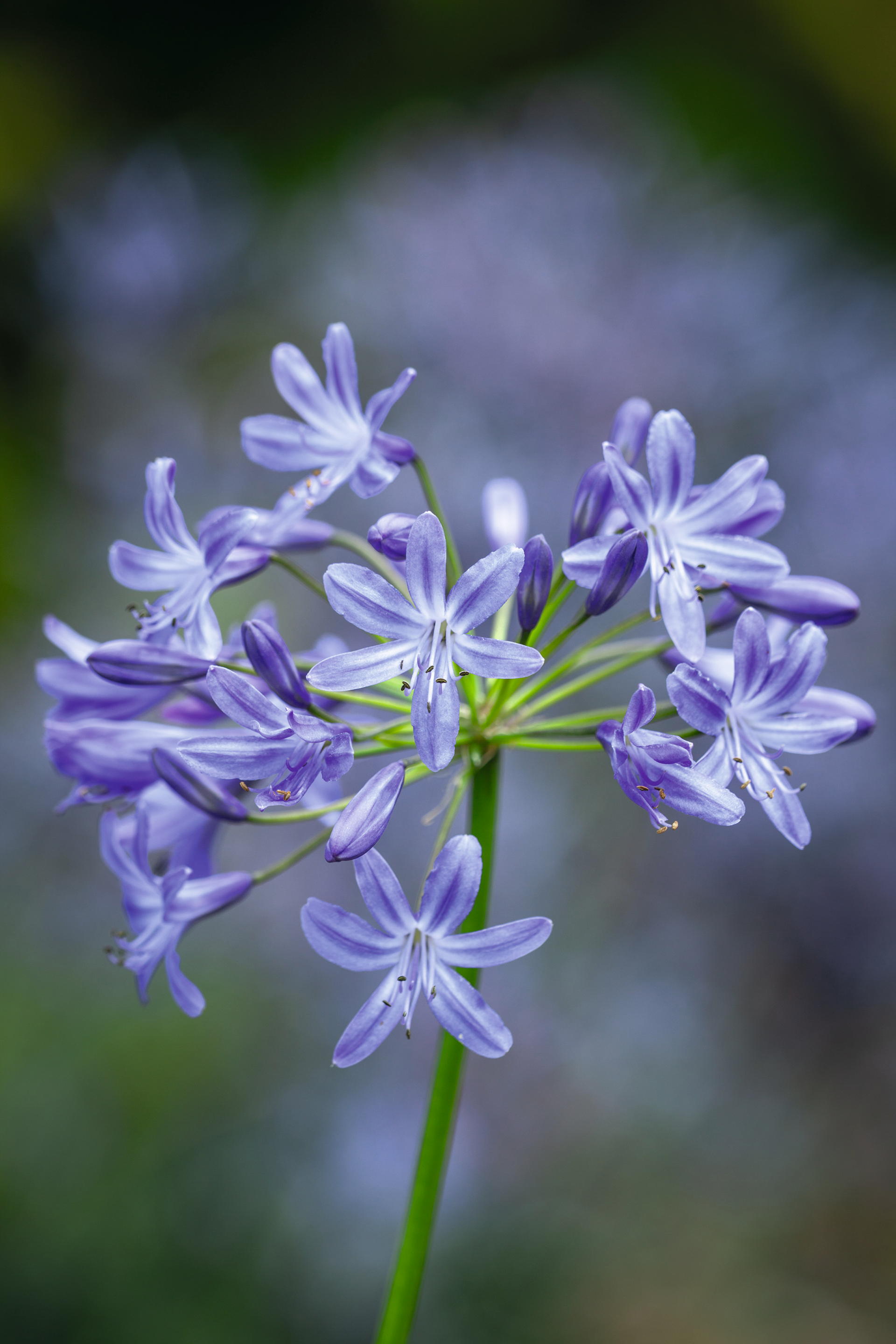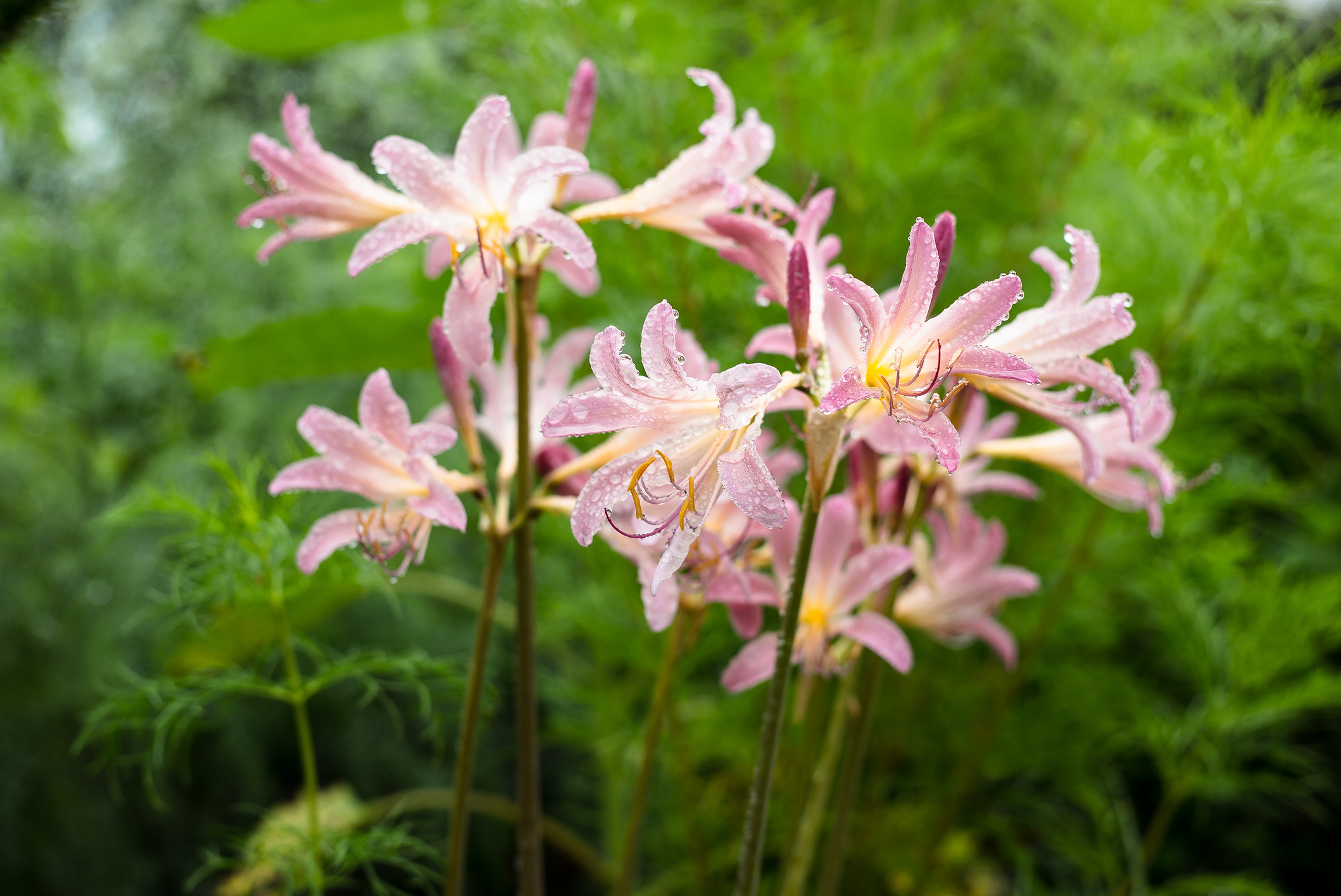Plant once, enjoy for decades: Alan Titchmarsh on the wonder that is the agapanthus
Agapanthus has a special place in Alan Titchmarsh's heart.


There are certain plants that weave their way into one’s affections over a period of years. For me, agapanthus is one such beauty. The African lily is its most frequently used common name, but Lily of the Nile bestows upon it an even greater air of exoticism, even if the river is hundreds of miles distant from the plant’s South African home.
In my Yorkshire childhood in the 1950s, I don’t recall ever encountering it. It wasn’t until the late 1960s at Kew Gardens that I first came to know the more tender species, planted alongside Decimus Burton’s Palm House, where they enjoyed the shelter and radiated heat that palace of glass provided. There are about 10 species of agapanthus, but most modern hybrids seem to be derived from crosses involving Agapanthus praecox, A.campanulatus and the more tender A. africanus.
Time was when these clump-forming plants with strappy leaves and umbels of flower held on stiff drumstick stems were rightly considered to be only partially hardy — surviving mild winters in mild counties and in need of winter protection if they were to come through unscathed. Then along came the Headbourne Hybrids, which exhibited a greater hardiness. They were bred in the 1940s and 1950s by the Hon Lewis Palmer, son of the 2nd Earl of Selborne, at Headbourne Worthy near Winchester in Hampshire and led the way to the emergence of a wide range of varieties with constitutions that are tough enough to withstand most British winters.

Headbourne Hybrids, bred in Hampshire in the 1940s and 1950s, provide hardy agapanthus equipped for British winter.
As summer-flowering beauties, they are hugely useful, blooming after that exuberant burst provided by a welter of border perennials in June. In July and August they can be had in flower for a month or so and, in a newer race of compact plants rather cheekily called Everpanthus, they have an extended season of bloom as flower stalks push up in succession from July to September.
In large pots — especially when placed at either side of a door or gateway — agapanthus provide a spectacular and elegant welcome and will survive for several years in John Innes No.3 peat-free compost before needing repotting. In borders, they will last even longer without attention. In my own garden, a pair of raised beds flanking a set of stone steps bloomed generously and consistently for about 20 years. They were mulched annually with garden compost and fed with blood, bone and fishmeal each spring just before the mulch was laid. Then, last year, their flowering capability diminished and I realised it was time to dig up and split them (agapanthus grow from dense crowns of rhizomatous roots, rather than from bulbs). The job was done in March this year and the newly divided crowns, each about the size of a coconut, were replanted about 6in apart in newly enriched soil. I fully expected them to take a year or so to recover. Not so. They have resumed their former vigour and are flowering profusely four months after being divided. Good old agapanthus, I say.
The variety I have is ‘Catharina’ — about 2ft tall with flowers of deep sky-blue. She flowered well for my elder daughter’s wedding in mid July 15 years ago now and my sentimental soul remembers that happy day with each succeeding flowering season.
One big plus is that the flowers are adored by bees; another is that they range in height from 1ft to 5ft, which means that you can choose a stature that suits your spot.
Exquisite houses, the beauty of Nature, and how to get the most from your life, straight to your inbox.
You’ll find varieties with flowers in every shade of blue, from those hyperbolically referred to as ‘black’ (not quite) to the pale and dusky ‘Lady Grey’ — an imposing 3ft-high dame who sits beside our front door — and pure white.

A bloom that even summer rain can't dampen.
For containers and where space is at a premium, the Everpanthus Series — such as ‘Ever White’ and ‘Midnight Sky’ — are a good bet and their extended flowering season means that they will earn their keep for more of the year than other varieties.
You’ll see them growing wild in South Africa, waving their azure umbels above the fynbos, and they have been valued on our shores since their introduction in the 17th century as plants for orangeries and conservatories, with the potted specimens enjoying a brief sojourn outdoors during the summer months.
At least nowadays they have shed those requirements of yesteryear for cossetting and winter protection, and the fact that they can be grown outdoors — in all but the coldest of locations — in sunny spots and well-drained soil has brought them well-deserved popularity. Mulch them generously in autumn if you are at all doubtful of their survival in your locale. I wouldn’t be without them.
‘Chatsworth: The gardens and the people who made them’ by Alan Titchmarsh (Ebury, £35) is out now
Alan Titchmarsh is a gardener, writer, novelist and broadcaster.
